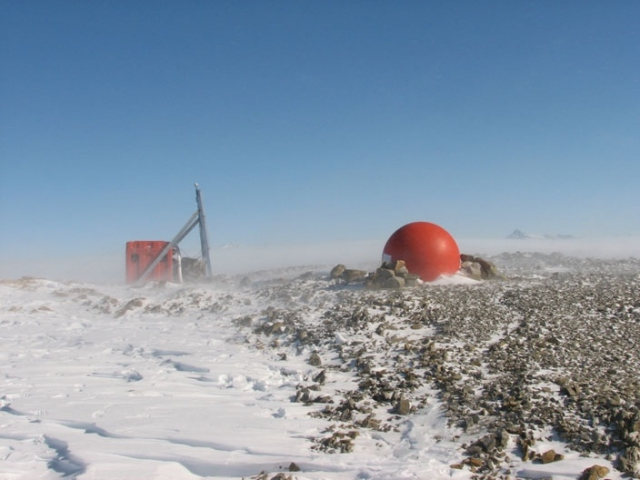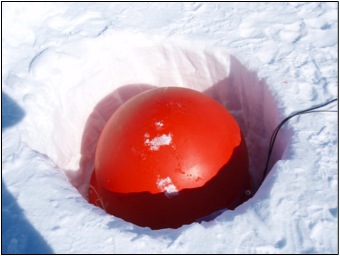Vaults for Year Round Polar Programs
Seismic Sensor Vaults
The type of seismic sensor vault and the amount of sophistication it requires, is dependent on the type of seismometer. A geophone does not require a “vault” per se, it can be buried in dirt or snow and be kept reasonably level in the process. A sensitive broadband seismometer requires a quiet, temperature stable and level vault. In the Antarctic two main styles of vaults are used for broadband seismometers: the rock vault and the snow vault.
The Rock Vault
In rocky environments where digging is nearly impossible, a weatherproof enclosure with a rigid bottom, typically aluminium, is secured to the ground. The seismometer is then set inside, oriented properly and leveled.
To reduce noise caused by wind, and to thermally stabilize the vault and protect the instrument from flying debris, a double walled dome is placed on top of the vault and anchored to the ground as well.

The Snow Vault
In snowy environments, as on the Antarctic Plateau, a large hole is dug in the snow. A rigid phenolic block, isolated from the ground by a rigid block of extruded polystyrene (blue foam) is laid and leveled on compacted snow at the bottom of the hole. The seismometer is oriented properly and leveled on the phenolic block. The sensor is then covered by a foam insulation or fiberglass insulation to keep the temperature of the vault as constant as possible. A double walled dome then covers the vault to further thermally stabilize the vault and protect it from the load of snow when the dome is buried. This design has proven to be a very quiet and stable vault.

- Home
- General Information
- Instrumentation
- Dataloggers
- Sensors
- All-In-One Systems
- Power Systems
- Field Procedures
- Controlled Sources
- Seismic Source Facility
- Magnetotelluric Systems at PASSCAL
- Ground Penetrating Radar
- Power and Memory Calculations Form
- Data Archiving
- Apply for a PI Account
- Experiment Scheduling
- Polar
- Important Hardware/Software Notes
- USArray
- Software


